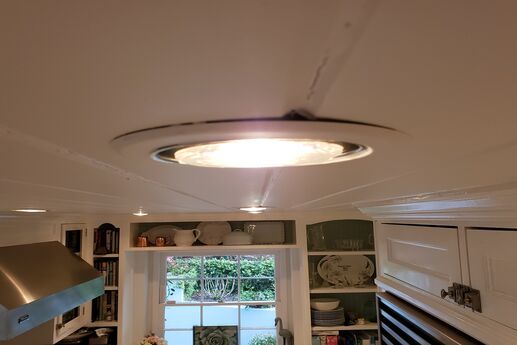A Guide to Buying Recessed Lighting
When building or remodeling a home, be sure to consider recessed lighting for at least some of the rooms. Recessed lighting is installed flush with the ceiling and can create both overall (or ambient) lighting in a space, as well as task lighting to illuminate specific objects or surfaces. Recessed fixtures can be fixed in place or be adjusted so that the angle of the light can be redirected.
Recessed lighting is often installed in kitchens and bathrooms to provide task lighting above kitchen countertops and bathroom vanities. However, hallways, living spaces and bedrooms can also be good choices for recessed lighting, as the light fixtures take up less space than typical ceiling-mount models.
Before purchasing new recessed lighting, research the various types that are available. You’ll come across an assortment of sizes and styles on store shelves, and choosing the right model is both a matter of taste and safety.
Read on to learn the basics of recessed lighting so you can be sure to choose the type that will work best for your home.
Light Fixture Housing
- The housing (aka cans or high-hats) of a light fixture holds the unit’s electrical components; typically, you can’t see it once it’s been installed. Two types of housing are available
New construction housing
- A fixture with new construction housing can only be used if the ceiling is not yet in place or if it has been opened up, allowing access to the fixture from above during installation
Remodel housing
- Fixtures with remodel housings are designed for use in existing finished ceilings and can be installed easily from underneath.
Also, you will find insulated-contact- (IC-) rated and non-IC-rated housing for both new construction and remodel fixtures. IC-rated housing is designed for use close to insulation (e.g., in a ceiling just below an insulated attic). When insulation is not present, such as in a basement, non-IC-rated housing can be used instead.
Sizes and Styles
Recessed lighting fixtures typically come in diameters ranging from 4-6 inches. A number of trim styles are also available:
Open: The most basic option available, open trims are simple and white, and they are the most likely to blend into the ceiling.
Baffle: Baffle trims include grooves just inside the light fixture. The grooves are designed to minimize reflection and create a more soothing light quality. Both black and white are available.
Slope: Designed for angled ceilings.
Eyeball: Fixtures with eyeball trims can be adjusted to direct light in the desired direction.
Lensed: Lensed trims are often used outside or in showers, as the lens protects the fixture from moisture.



